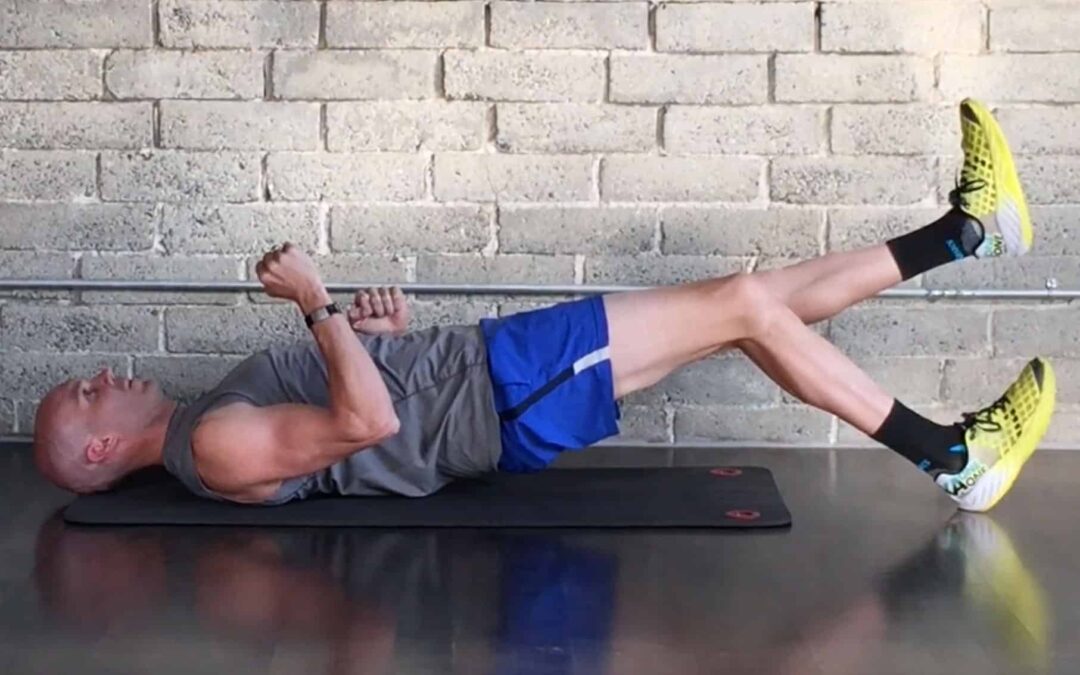

Hip Airplane + Step Up/Down
Two of my favorite drills, which I routinely incorporate into exercise programs for runners, are the hip airplane and step up. I was recently performing these exercises as part of daily training session when I suddenly thought, “Why in the hell am I not combining these two exercises?” Having come to this realization, I naturally recorded it to share it with the online community. I love drills of this nature because they are directly relevant to running while relying on minimal to no equipment yet create a unique challenge. All you need is a stair, stepper, or cinder block and you are in business. Irrespective of where you fall on the running spectrum in terms of age and ability, I’d suggest having a practice. See you on the streets and good luck to all those racing the NYC marathon this upcoming weekend.
Supine Trunk Training
I confess to having a fetish with putting my body under load in various ways while syncing it up to kinky music. Kind of weird behavior though we are all adults here ;-). This is a simple drill that I occasionally work into my routine to challenge trunk strength and control while superimposing lower extremity movements.
All you need is a flat bench and you are in business! Naturally folks, will tend to overarch their back, which is by no means the devil though something that you should aim to minimize, especially if you do not tolerate spinal extension. If this particular version of the exercise is too difficult, modify the exercise by reducing the excursion of the leg movements or slide up on the bench. As always, wishing you HAPPY, HEALTHY, & STRONG TRAINING!
Prone Extensions & Marching
This is a great drill that builds strength and endurance of the spinal extensors, which are pretty darn important when it comes to running. Furthermore, we can also incorporate a simple marching drill to further challenge trunk control. All you need is a standard bench and you are in business. If you are interested in learning more about how I work a drill of this nature into my overall treatment or coaching programs, check out The Runner’s Zone, which will launch on Nov. 15th, 2016.



